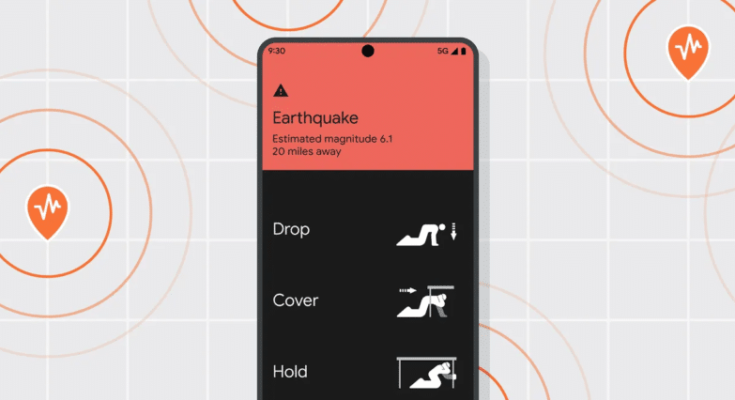
Safety alerts on phones have become a key player in helping people prepare for natural disasters and emergencies. Early warning of earthquakes can save thousands of lives, and Google has been developing an Android Earthquake Alerts System, which can provide early warning before the earth starts shaking.
Google had previously introduced this feature for users in selected U.S. states but has announced that they are expanding coverage to all U.S. states and 6 different U.S. territories, with the rollout to be completed by late September.
How do Android Earthquake Alerts work in the U.S.?
Google has been working for four years with the United States Geological Survey, The California Governor’s Office of Emergency Services, and the ShakeAlert System, to make Android Earthquake Alerts a reality.
This system for Android phones was first available in California, Oregon, and Washington, and has proven to be successful. The alerts rely on regular seismometers to detect earthquakes, which even though is not groundbreaking, has been effective.
Google has integrated built-in accelerometers into Android phones to provide earthquake alerts for areas without USGS ShakeAlert coverage.
These accelerometers can sense vibrations that show an earthquake might be happening, and when they do detect the shaking, the Android Earthquake Alerts System will analyze complex crowdsourced data to determine if an earthquake is or isn’t happening.
If an earthquake of 4.5 magnitude or greater is detected by the Android system, users receive two warning alerts. The first one reads, “Be Aware”, which signals weak or light shaking, giving you a heads-up to prepare for potential stronger shaking. The second one is far more radical instructing users to “Take Action”, telling users to take immediate action and protect themselves.
Google partnered with leading experts to improve the Android Earthquake Alerts System
The tech giants have teamed up with experts on Earthquakes to improve their systems. For instance, Dr. Jeannette Sutton from the University at Albany explained, “Earthquake alerts on your device reduce milling and the verification pause that often occurs during crises when people lose valuable time seeking confirmation from unreliable sources.”
Dr. Sutton added that expanding the system can also improve public safety during earthquake crises by providing as much crucial information as possible for users.
But this is not the only new feature Google is releasing with its latest Android update. Google is also planning on releasing offline Maps on their smartwatches, which would let users access the maps downloaded on their phones directly on their wrists.



